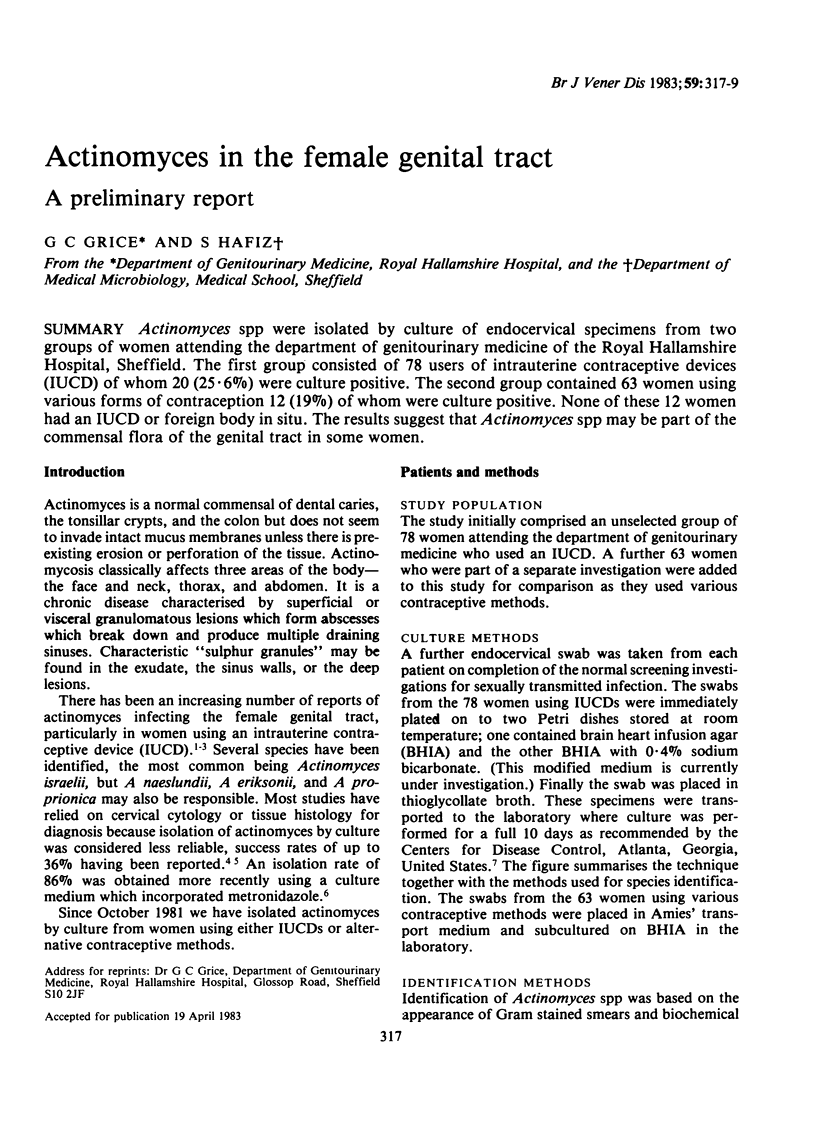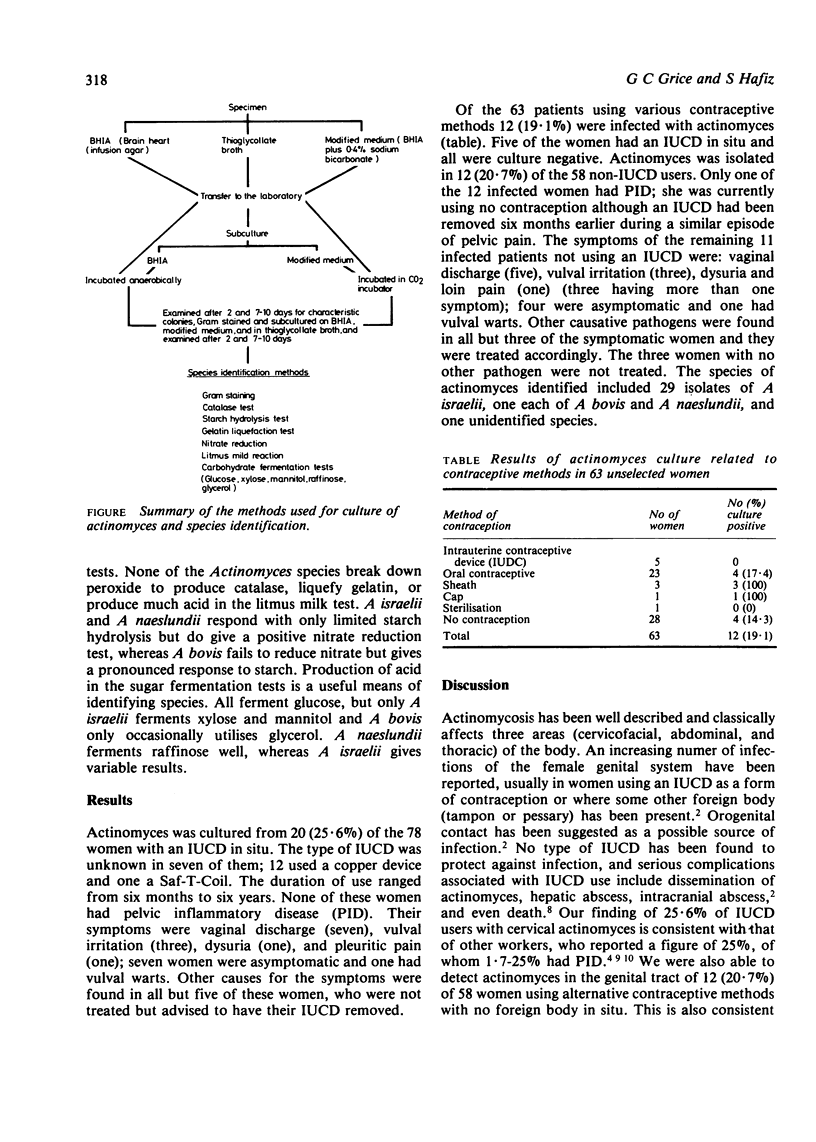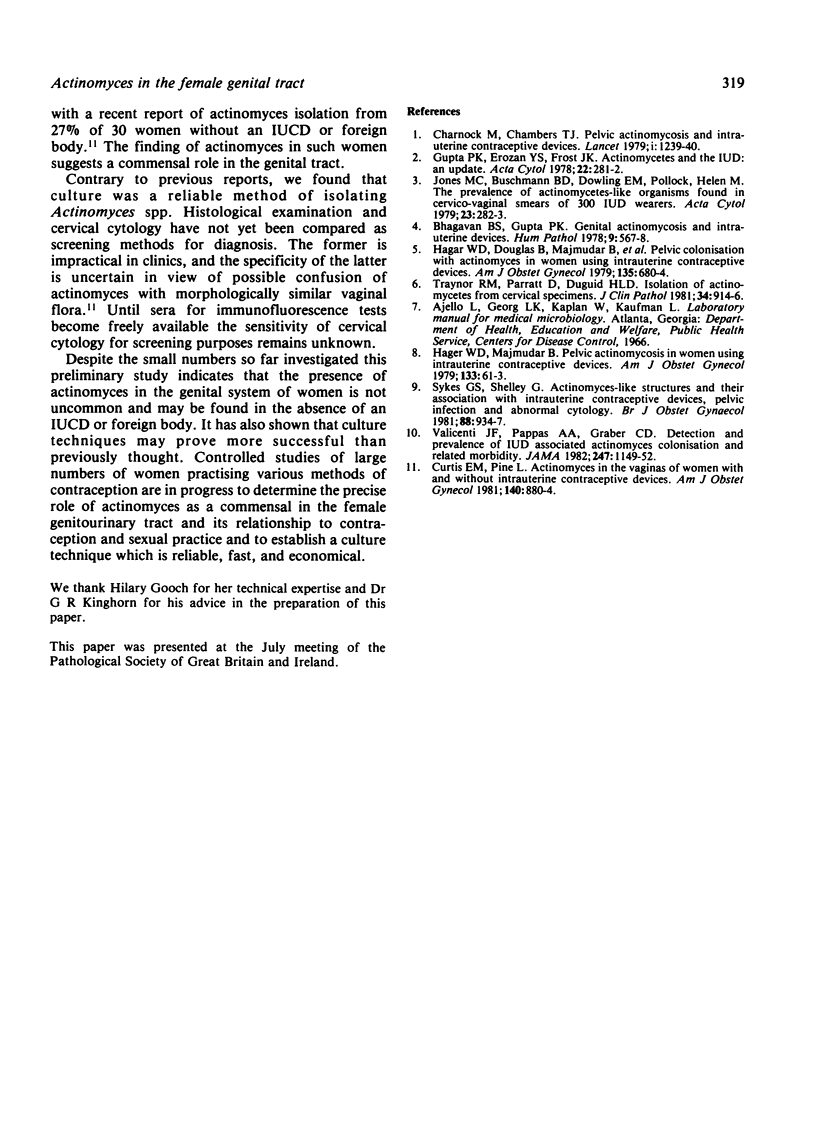Abstract
Actinomyces spp were isolated by culture of endocervical specimens from two groups of women attending the department of genitourinary medicine of the Royal Hallamshire Hospital, Sheffield. The first group consisted of 78 users of intrauterine contraceptive devices (IUCD) of whom 20 (25.6%) were culture positive. The second group contained 63 women using various forms of contraception 12 (19%) of whom were culture positive. None of these 12 women had an IUCD or foreign body in situ. The results suggest that Actinomyces spp may be part of the commensal flora of the genital tract in some women.
Full text
PDF


Selected References
These references are in PubMed. This may not be the complete list of references from this article.
- Bhagavan B. S., Gupta P. K. Genital actinomycosis and intrauterine contraceptive devices. Cytopathologic diagnosis and clinical significance. Hum Pathol. 1978 Sep;9(5):567–578. doi: 10.1016/s0046-8177(78)80137-3. [DOI] [PubMed] [Google Scholar]
- Charnock M., Chambers T. J. Pelvic actinomycosis and intrauterine contraceptive devices. Lancet. 1979 Jun 9;1(8128):1239–1240. doi: 10.1016/s0140-6736(79)91917-2. [DOI] [PubMed] [Google Scholar]
- Curtis E. M., Pine L. Actinomyces in the vaginas of women with and without intrauterine contraceptive devices. Am J Obstet Gynecol. 1981 Aug 15;140(8):880–884. doi: 10.1016/0002-9378(81)90078-8. [DOI] [PubMed] [Google Scholar]
- Gupta P. K., Erozan Y. S., Frost J. K. Actinomycetes and the IUD: an update. Acta Cytol. 1978 Sep-Oct;22(5):281–282. [PubMed] [Google Scholar]
- Hager W. D., Douglas B., Majmudar B., Naib Z. M., Williams O. J., Ramsey C., Thomas J. Pelvic colonization with Actinomyces in women using intrauterine contraceptive devices. Am J Obstet Gynecol. 1979 Nov 1;135(5):680–684. doi: 10.1016/s0002-9378(16)32995-7. [DOI] [PubMed] [Google Scholar]
- Jones M. C., Buschmann B. O., Dowling E. A., Pollock H. M. The prevalence of actinomycetes-like organisms found in cervicovaginal smears of 300 IUD wearers. Acta Cytol. 1979 Jul-Aug;23(4):282–286. [PubMed] [Google Scholar]
- Sykes G. S., Shelley G. Actinomyces-like structures and their association with intrauterine contraceptive devices, pelvic infection and abnormal cervical cytology. Br J Obstet Gynaecol. 1981 Sep;88(9):934–937. doi: 10.1111/j.1471-0528.1981.tb02232.x. [DOI] [PubMed] [Google Scholar]
- Traynor R. M., Parratt D., Duguid H. L., Duncan I. D. Isolation of actinomycetes from cervical specimens. J Clin Pathol. 1981 Aug;34(8):914–916. doi: 10.1136/jcp.34.8.914. [DOI] [PMC free article] [PubMed] [Google Scholar]
- Valicenti J. F., Jr, Pappas A. A., Graber C. D., Williamson H. O., Willis N. F. Detection and prevalence of IUD-associated Actinomyces colonization and related morbidity. A prospective study of 69,925 cervical smears. JAMA. 1982 Feb 26;247(8):1149–1152. [PubMed] [Google Scholar]


